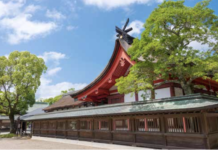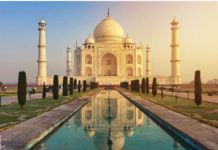by Sophie Ibbotson & Max Lovell-Hoare (Photo by Robert Huberman/Superstock/Corbis)
Dating back more than 2,000 years, Bukhara, one of the best-preserved Islamic cities in Central Asia, boasts an urban fabric that remains largely intact.
When Genghis Khan led his marauding horde across the Central Asian steppe at the start of the 13th century, he wrought death and destruction everywhere he went. Hundreds of thousands of people were slain by Mongol swords, their farmlands and homes torched. Those who did survive the initial onslaught fled, frequently only to die in the coming months from starvation, disease and exposure. History has painted Genghis Khan as a man without mercy, and more often than not, that was true.
Genghis was a man with a split personality, however: he was capable of extreme violence, but also had a more sensitive side. His military campaigns were borne out of an initial campaign to recapture his young wife, kidnapped by a rival tribe, and he had a genuine appreciation of beauty. As he advanced on Bukhara, already an important mercantile and religious centre on the Silk Road, he was transfixed by the Kalyon Minaret, rising up from the city’s skyline. Up close, he found the tower was no less entrancing.
He stood in the courtyard of the Namazgokh Mosque and proclaimed himself the “Scourge of God”; he drove his soldiers on as they massacred every one of Bukhara’s 30,000 troops, but he would not let anyone lay a finger on the minaret. All of Bukhara’s other medieval buildings were razed to the ground, but the Kalyon Minaret was saved. It is around this architectural and engineering masterpiece that Bukhara’s Old Town, celebrated as a UNESCO World Heritage Site, grew up.
Just like Genghis Khan, modern visitors to Bukhara cannot but be impressed by the Kalyon Minaret. Meaning, “the Great Minaret”, it rises elegantly above the Poi Kalyon Square. An inscription on the tower tells us that it was built in 1127 by an architect named Bako: he ordered that the foundations be dug 13 metres deep and he devised an unusual (though, if its longevity is anything to go by, clearly strong) mortar comprised of bulls’ blood, camel milk and eggs. It took two years for this mortar to set and, once complete, the Kalyon Minaret was the tallest, free-standing building in the world. Unlike those who subsequently surveyed the minaret, however, Bako was never satisfied with his work. He died shortly after its completion, supposedly of a broken heart, as it never matched up to his dreams.
For the rest of this article (Asian Geographic Issue 3/2017 No. 125) and other stories, check out our past issues here or download digital copy here.











